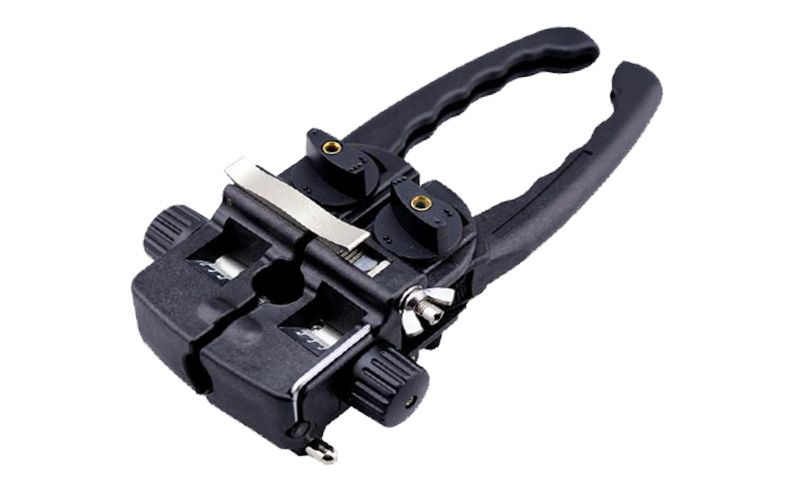
How It Works: Blades cut perpendicular to the fiber axis, creating a circular incision around the coating.
Best For:
Tight, precise stripping (e.g., 250µm or 900µm coatings).
Single-fiber cables (e.g., patch cords, pigtails).
Pros:
✅ Clean, even cuts with minimal risk of fiber nicks.
✅ Works well with tight-buffered fibers.
Cons:
⚠ Not ideal for loose-tube cables or thick jackets.
⚠ Requires adjustment for different coating diameters.
Example Tools:
Jonard FCS-2 (adjustable for 250µm–3mm coatings)
Miller FS-2 (dual-blade for precise stripping)
2. Lengthwise (Linear) Fiber Strippers
How It Works:
Blades cut parallel to the fiber axis, splitting the coating lengthwise (like peeling a banana).
Best For:
Loose-tube cables or multi-fiber ribbons.
Thick jackets (e.g., 3mm–6mm OD cables).
Pros:
✅ Faster stripping over long cable segments.
✅ No need to rotate the tool (good for confined spaces).
Cons:
⚠ Higher risk of fiber damage if misaligned.
⚠ Less precise than circular strippers for tight buffers.
Example Tools:
FiberFox LS-2 (linear blade for ribbon fibers)
Klein Tools VDV826-210 (lengthwise jacket stripper)
✔ Adopts the new 70-degree blade, make cable stripping more effort-saving.
✔ Adopts a new type notch-wheel to strengthen the grip and avoid a skid while stripping the cable.
✔ Has a crosswise stripping function.
✔ The new dial patch is clearer.
✔ The clamped knob and spin-cap improvement is more convenient when in use.
✔ Equipped with a hexagonal spanner, making the blade changing more convenient by the user.


© 2024-2026 ARTIC FIBER OPTIC CO.,LTD. All Rights Reserved.